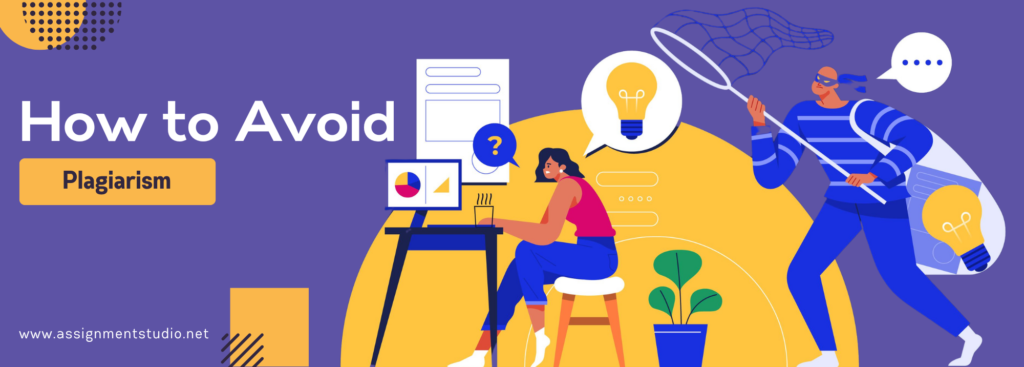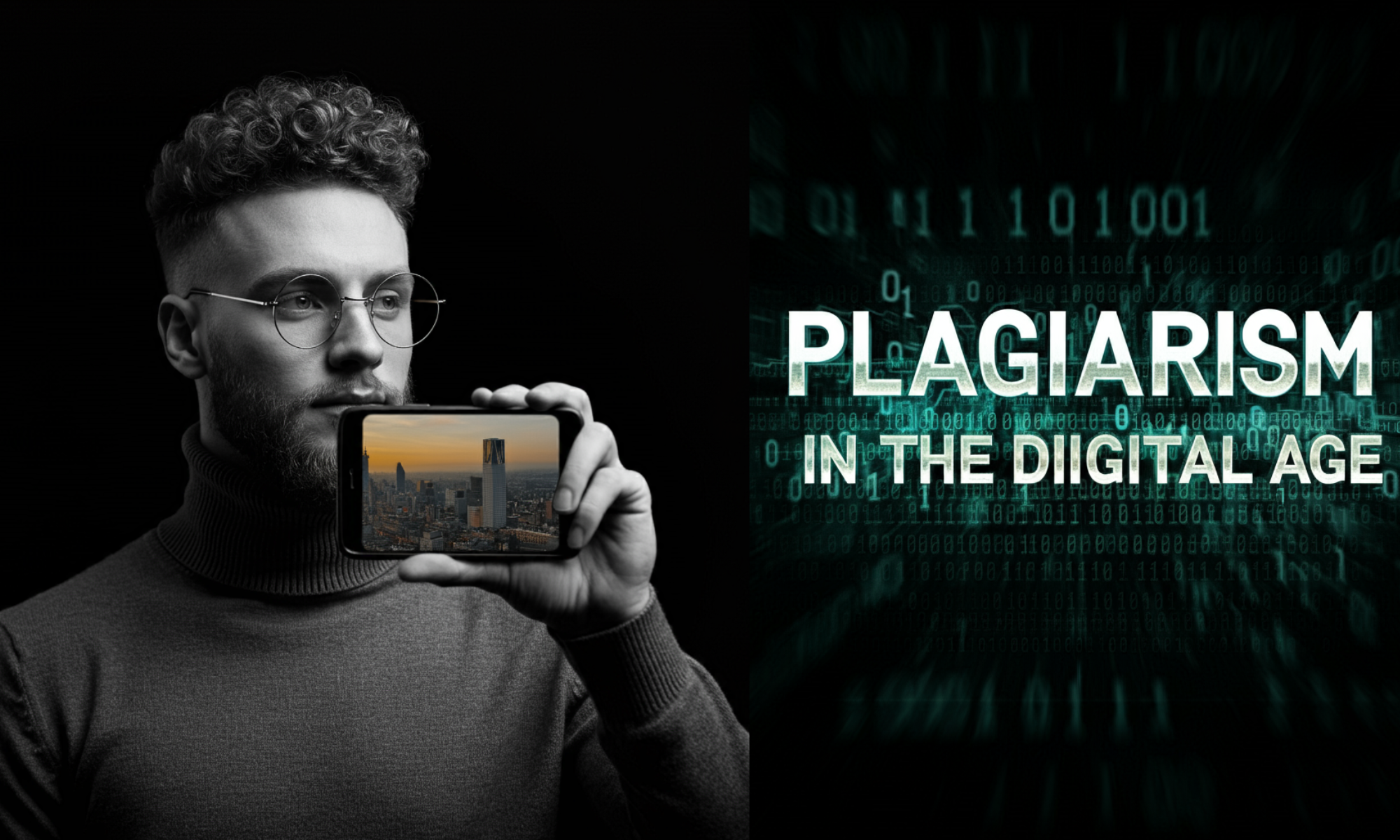
In the world of academia and professional writing, few words carry as much weight as “plagiarism.” It’s a term that can strike fear into the hearts of students and writers alike, and for good reason. But what exactly is plagiarism, and why is it such a big deal? More importantly, how can you avoid it in your own work? Whether you’re a student seeking assignment help or a professional writer looking to maintain your integrity, this comprehensive guide will help you navigate the murky waters of plagiarism and emerge with your academic and professional reputation intact.
Table of Contents
What is Plagiarism?
At its core, plagiarism is the act of using someone else’s words, ideas, or work without proper attribution. It’s essentially passing off another person’s intellectual property as your own. This can take many forms, from copying and pasting text directly from a source without citation, to paraphrasing ideas without acknowledging their origin.
Dr. Sarah Thompson, Professor of Ethics at Harvard University, defines plagiarism as “a form of intellectual theft that undermines the very foundations of academic integrity and original thought.” This definition underscores the seriousness with which educational institutions and professional organizations view plagiarism.

Types of Plagiarism
Plagiarism isn’t always as straightforward as copying an entire essay. It can be subtle and sometimes even unintentional. Here are some common types of plagiarism:
- Direct Plagiarism: This is the most blatant form, involving copying text word-for-word without quotation marks or attribution.
- Mosaic Plagiarism: Also known as “patchwork plagiarism,” this involves taking phrases from various sources and piecing them together without proper citation.
- Self-Plagiarism: Yes, you can plagiarize yourself! This occurs when you reuse your own previous work without acknowledging it.
- Accidental Plagiarism: This happens when you forget to cite a source or incorrectly cite it.
- Paraphrasing Plagiarism: Changing a few words in a sentence or paragraph without citing the original source.
Understanding these different forms is crucial for anyone seeking essay writing help or working on academic papers.
The Consequences of Plagiarism
The repercussions of plagiarism can be severe and long-lasting. In academic settings, consequences may include:
- Failing grades on assignments or entire courses
- Academic probation or suspension
- Expulsion from educational institutions
In professional settings, plagiarism can lead to:
- Loss of credibility and reputation
- Termination of employment
- Legal action and financial penalties
According to a study by Turnitin, a leading plagiarism detection service, approximately 58% of high school and college papers contain plagiarized material. This statistic highlights the prevalence of the issue and the need for greater awareness and education.

How to Avoid Plagiarism
Now that we understand what plagiarism is and its potential consequences, let’s explore some strategies to avoid it. Whether you’re working on a research paper, seeking paper help, or crafting a professional document, these tips will help you maintain academic integrity.
1. Understand and Use Proper Citation
One of the most effective ways to avoid plagiarism is to cite your sources correctly. Different academic disciplines use various citation styles, such as APA, MLA, or Chicago. Familiarize yourself with the citation style required for your field or assignment.
Pro Tip: Use citation management tools like Zotero or Mendeley to keep track of your sources and generate citations automatically.
2. Take Effective Notes
When researching for your paper, make sure to keep detailed notes of your sources. Include:
- The author’s name
- The title of the work
- Publication information
- Page numbers for specific quotes or ideas
This practice will make it easier to attribute information correctly when you start writing.
3. Paraphrase Properly
Paraphrasing is a valuable skill in academic writing, but it must be done correctly to avoid plagiarism. Follow these steps:
- Read the original text thoroughly
- Put it aside and write the idea in your own words
- Compare your version with the original to ensure it’s sufficiently different
- Cite the source, even if you’ve paraphrased
Remember, changing a few words here and there is not proper paraphrasing. You need to restate the idea entirely in your own voice.
4. Use Quotation Marks for Direct Quotes
When you use an author’s exact words, always enclose them in quotation marks and provide a citation. For longer quotes (usually more than 40 words), use block quotation formatting according to your citation style.
5. Develop Your Own Ideas
While research is crucial, your paper should primarily reflect your own thoughts and analysis. Use sources to support your arguments, not to make the arguments for you.
Dr. John Davis, a writing instructor at Yale University, advises: “Think of your sources as a springboard for your own ideas. They should inform your thinking, not replace it.”
6. Use Plagiarism Checkers Wisely
Many online tools can help you check your work for potential plagiarism. However, these should be used as a supplement to, not a replacement for, careful writing and citation practices.
Popular plagiarism checkers include:
While these tools can be helpful, remember that they’re not infallible. Always review your work carefully yourself.

Common Plagiarism Pitfalls to Avoid
Even with the best intentions, it’s easy to fall into plagiarism traps. Here are some common pitfalls to watch out for:
Forgetting to Cite Common Knowledge
While you don’t need to cite facts that are considered common knowledge (e.g., “The Earth orbits the Sun”), be cautious. What’s common knowledge in one field might not be in another. When in doubt, cite your source.
Overreliance on Source Material
It’s tempting, especially when you’re struggling with a difficult topic, to lean heavily on your sources. However, this can lead to a paper that’s essentially a patchwork of other people’s ideas. Strive for a balance between source material and your own analysis.
Collaborative Work Confusion
Group projects can be a breeding ground for unintentional plagiarism. Make sure you understand which parts of the work are shared and which are individual contributions. When in doubt, ask your instructor for clarification.
The Ethics of Academic Integrity
Understanding plagiarism goes beyond just knowing the rules. It’s about embracing the ethics of academic integrity. Dr. Lisa Chen, an expert in academic ethics at Stanford University, explains:
“Academic integrity is the cornerstone of intellectual growth. When we properly attribute ideas and engage in honest academic discourse, we’re not just avoiding punishment – we’re participating in the grand tradition of knowledge building that spans generations.”
This perspective helps us see that avoiding plagiarism isn’t just about following rules; it’s about respecting the intellectual contributions of others and adding our own voice to the academic conversation.
Plagiarism in the Digital Age
The internet has made information more accessible than ever before, but it has also made plagiarism easier to commit and harder to detect. With the rise of AI-generated content, the landscape is becoming even more complex.

The Challenge of Internet Sources
When using internet sources, be extra vigilant. Not all online information is reliable, and it can be challenging to find proper citation information for some web pages. Use academic databases and reputable websites when possible, and always record the URL and access date for online sources.
AI and Plagiarism
As AI writing tools become more sophisticated, new questions about authorship and originality are arising. While these tools can be helpful for brainstorming or overcoming writer’s block, relying on them too heavily can border on plagiarism.
Dr. Robert Johnson, an AI ethics researcher, warns: “Using AI to generate content without disclosure is a form of plagiarism. It’s crucial to understand the limitations and ethical implications of these tools in academic and professional settings.”
Cultivating a Culture of Academic Integrity
Ultimately, avoiding plagiarism is about more than just following rules – it’s about fostering a culture of academic integrity. Here are some ways to contribute to this culture:
- Lead by example: Practice proper citation and encourage your peers to do the same.
- Seek clarification: If you’re unsure about citation practices or assignment expectations, ask your instructor.
- Embrace the learning process: Remember that the goal of academic writing is not just to produce a paper, but to engage with ideas and develop your own thinking.
- Support your peers: If you notice a classmate struggling with citation or paraphrasing, offer help or direct them to campus resources.
- Celebrate originality: Recognize and appreciate original thought in your own work and that of others.
The Path Forward
Understanding plagiarism and how to avoid it is a crucial skill for any student or professional writer. By practicing proper citation, developing your own ideas, and embracing the ethics of academic integrity, you not only protect yourself from the serious consequences of plagiarism but also contribute to a richer, more vibrant intellectual community.
Remember, every time you properly cite a source, you’re not just avoiding plagiarism – you’re participating in a centuries-old tradition of knowledge sharing and building. You’re acknowledging the thinkers who came before you and paving the way for those who will come after.
As you continue your academic or professional journey, carry these principles with you. Seek out assignment help and paper help when you need it, but always strive to maintain your academic integrity. Your unique voice and ideas matter – make sure they’re heard, and properly attributed.
By understanding plagiarism and committing to academic integrity, you’re not just protecting yourself – you’re contributing to the advancement of knowledge and ideas. And in doing so, you’re taking your place in the grand tradition of scholarship that has shaped our world.






